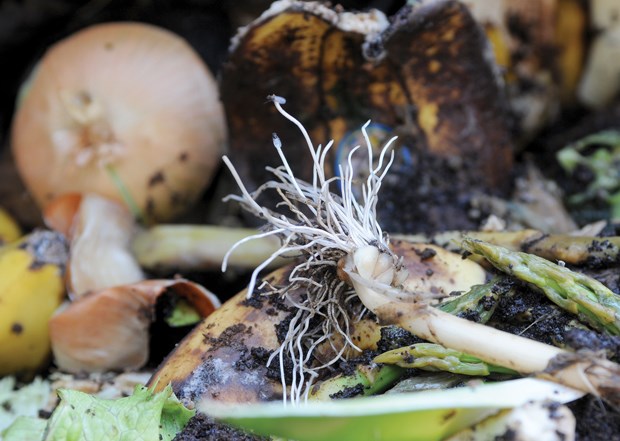With the growth of blogs and websites offering gardening information on the Internet, it seems everyone has a to-do list for the season.
I have never put much faith in gardening to-do lists written by writers who are not gardeners, or lists written by someone trying to sell a product. Many of the ideas expressed on those lists are derived from some sort of dark ether designed to make us do needless work or to buy something. So, to provide some clarity to the preponderance of pesky and pitiful fall gardening lists, I am going to do some fall garden list myth busting.
Fall gardening myth No. 1: Sprinkling human hair on top of the soil where bulbs are planted will keep squirrels away.
I don't know what kind of black magic this myth is but it's false. On our rainy West Coast the sheer volume of rainfall in October and November will wash away any scent of human hair. And I have yet to see a squirrel that is scared of me. Most of them simply chirp and run up a tree and look back at me as if I was crazy while I am yelling at them. To keep squirrels from digging up bulbs, cover your soil with a three to four inch layer of fresh, unmodified bark mulch. The slivers and smell of the bark will do the rest.
Fall gardening myth No. 2: Cover your compost pile with plastic before freezing temperatures arrive.
In very cold regions, like the B.C. Interior, perhaps this is a good idea to help keep compost temperatures high enough to allow decomposition to continue for a short time. But I doubt it. Freezing temperatures are helpful in breaking down heavily lignified fibres in the compost. Any snowfall helps to compress and further break down compost piles. There is no way to prevent a slowdown of compost decomposition during winter unless you install heating cables in the pile. As well, plastic covers will starve the pile of oxygen needed for decomposition, which will allow anaerobic bacteria to thrive, producing that awful sickly smell of rotten eggs and a useless compost product.
Fall gardening myth No. 3: Apply dormant oil or lime sulphur spray to fruit trees and ornamental shrubs once the leaves have dropped to control pests that overwinter on branches and trunks.
There are so many problems with this antiquated recommendation that I don't know where to begin.
Firstly, those poisonous pesticides are highly susceptible to leaching from rainfall. And when does it rain the most in our region? In the fall and early winter, from October to December.
Secondly, many insects, like tent caterpillars, and diseases, like apple scab, cannot be controlled by dormant sprays.
Thirdly, why would anyone recommend spraying poison on a calendar schedule without first recommending an inspection and identification of any pests that may be present?
Fall gardening myth No. 4: Wait until the soil has frozen before mulching fall plantings.
This myth shows a real lack of horticultural understanding. The purpose of mulch, beyond the many soil fertility benefits, is to protect the soil from climate stress, like freezing temperatures.
So why would anyone wait until their new plant's rootball freezes before mulching? It's beyond stupidity.
Fall gardening myth No. 5: Fall is the only time to move clematis or honeysuckle vines to prevent transplant shock.
I'm not sure where this fairy tale came from but one thing is for sure, it is wrong. Clematis, honeysuckle and most other woody vines can be moved when there is no danger of sub-zero temperatures or extreme drought.
This means you can transplant those plants from mid-September until April or even May. A January transplant may be suspended until freezing temperatures or snowfall subsides. Transplanting those plants in July or August is not recommended due to summer drought and high temperatures. Any plant can be transplanted when it is dormant or just beginning growth but not during active growth.
Fall gardening myth No. 6: Apply fall fertilizer to lawns.
Really? Just so our heavy fall rains can leach the fertilizer into the ocean to create aquatic dead zones? This myth is meant to sell product, and it's unhealthy for the environment.
The reason I try to dispel such myths is two-fold.
Firstly, I want to expose information that is untrue, costs money and damages Mother Earth and there's plenty of it out there.
Secondly, the science of horticulture, or gardening if you prefer, is well established. Growing and caring for plants should be based on science, experience and some trial and error, not myths.
Todd Major is a journeyman horticulturist, garden designer and builder, teacher and organic advocate. [email protected]



